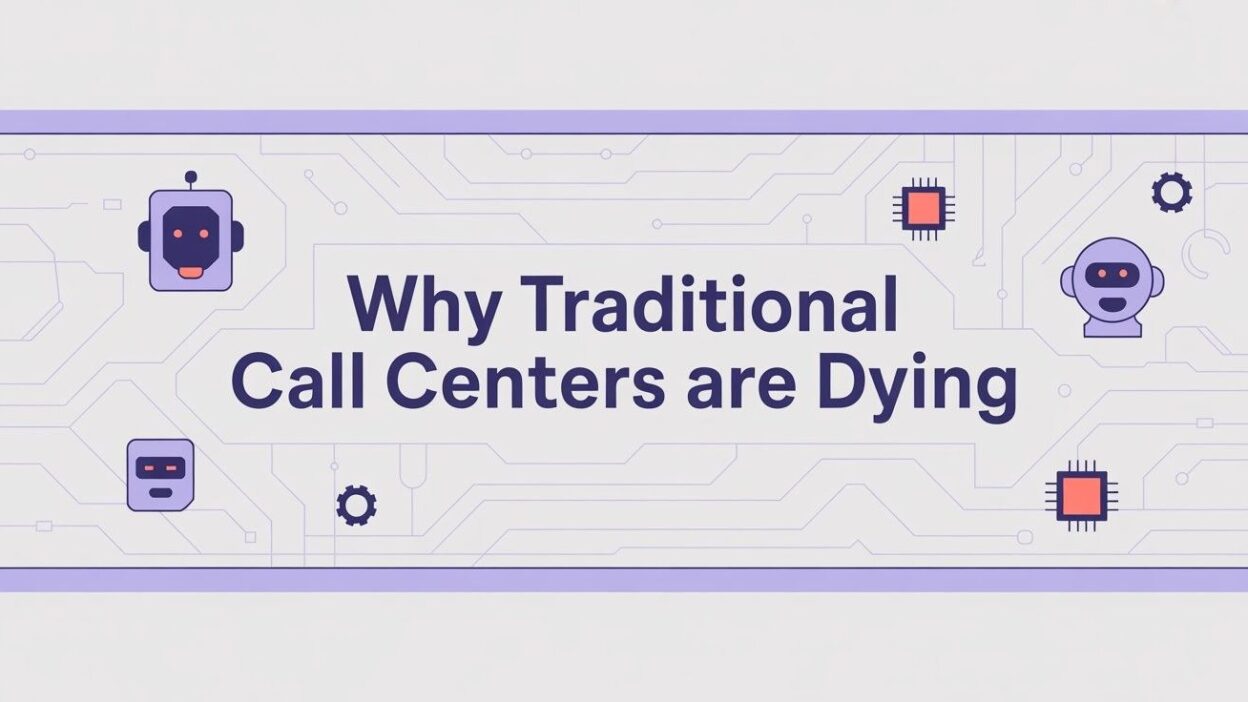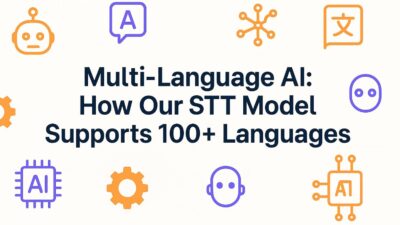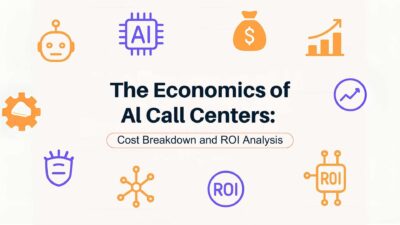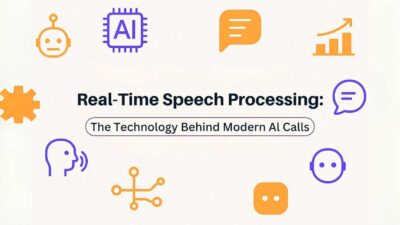The writing is on the wall for traditional call centers. After decades of serving as the backbone of customer service operations across industries, these conventional customer support models are experiencing an unprecedented decline. The shift away from traditional call centers isn’t just a trend – it’s a fundamental transformation driven by changing customer expectations, technological advances, and economic realities that make the old model increasingly obsolete.
Table of Contents
The Current Crisis Facing Traditional Call Centers
Traditional call centers are experiencing a perfect storm of challenges that threaten their very existence. Employee turnover rates have skyrocketed to an average of 75% annually, creating constant staffing challenges and training costs that drain profitability. The COVID-19 pandemic accelerated these problems, forcing rapid transitions to remote work that exposed the limitations of traditional call center infrastructure.
Customer satisfaction scores for traditional call centers have steadily declined over the past five years, with average satisfaction ratings dropping from 74% in 2019 to just 61% in 2024. This decline reflects growing customer frustration with long wait times, inconsistent service quality, and the inability of traditional systems to provide the immediate, personalized support that modern consumers expect.
The financial burden of maintaining traditional call centers has become increasingly unsustainable. The average cost per call in traditional call centers has risen to $15.50, while operational overhead continues to climb due to real estate costs, equipment maintenance, and the constant need for hiring and training new staff. These escalating costs are forcing businesses to reconsider the viability of traditional call center models.
Changing Customer Expectations Drive the Shift
Today’s customers have fundamentally different expectations for customer service than those who were satisfied with traditional call centers in previous decades. The rise of digital-native consumers who grew up with instant messaging, social media, and on-demand services has created demand for immediate, multichannel support that traditional call centers simply cannot deliver effectively.
Modern customers expect responses within minutes, not hours. They want the ability to seamlessly transition between communication channels without repeating information. They demand personalized experiences based on their history and preferences, rather than starting from scratch with each interaction. Traditional call centers, with their siloed approach and limited integration capabilities, struggle to meet these elevated expectations.
The generational shift in customer preferences is particularly telling. Research shows that 73% of millennials and Gen Z customers prefer self-service options or digital communication channels over traditional phone calls. This preference shift represents a fundamental challenge to the traditional call center model, which relies heavily on voice communication as the primary customer interaction method.
Technological Disruption Accelerates the Decline
Advanced technologies have emerged that can deliver superior customer service experiences at a fraction of the cost of traditional call centers. Artificial intelligence, machine learning, and natural language processing have matured to the point where they can handle complex customer interactions with accuracy and efficiency that often exceeds human performance for routine inquiries.
Chatbots and virtual assistants now resolve 67% of customer inquiries without human intervention, handling tasks that would traditionally require trained call center agents. These AI-powered solutions operate 24/7 without breaks, sick days, or turnover, providing consistent service quality that traditional call centers cannot match.
Cloud-based customer service platforms have eliminated many of the infrastructure constraints that made traditional call centers expensive and inflexible. Modern contact center solutions can scale instantly to handle volume spikes, integrate with existing business systems, and provide analytics and insights that were impossible with traditional call center technology.
The Economic Reality of Traditional Call Center Operations
The economics of traditional call centers have become increasingly unfavorable in today’s business environment. The total cost of ownership for traditional call center operations includes not just agent salaries, but also real estate, equipment, management overhead, training costs, and the hidden costs of high turnover rates.
Consider the true cost structure: the average traditional call center agent costs $45,000 annually in salary and benefits, but when accounting for recruitment, training, management, facilities, and technology infrastructure, the total cost per agent often exceeds $75,000 per year. With turnover rates averaging 75%, companies are constantly investing in recruitment and training that fails to deliver long-term value.
In contrast, modern alternatives can deliver the same service capacity at 60-80% lower total cost. AI-powered customer service solutions eliminate most labor costs while providing superior availability and consistency. This dramatic cost differential is forcing businesses to fundamentally reconsider their customer service strategies.
Quality and Consistency Challenges in Traditional Models
Traditional call centers suffer from inherent quality control challenges that are difficult to overcome with human-centered operations. Service quality varies significantly between agents, shifts, and even individual interactions based on factors like agent mood, fatigue, and experience level.
Training consistency represents another major challenge. Even with standardized training programs, human agents interpret and apply information differently, leading to inconsistent responses to similar customer inquiries. This inconsistency creates customer frustration and can lead to compliance issues in regulated industries.
The knowledge management problem in traditional call centers is particularly acute. Keeping hundreds of agents updated with the latest product information, policy changes, and procedures requires enormous effort and rarely achieves complete consistency. Meanwhile, AI-powered systems can be updated instantly and provide consistent, accurate information across all interactions.
Scalability Limitations of Traditional Infrastructure
Traditional call centers face significant scalability constraints that make them poorly suited for modern business needs. Adding capacity requires hiring and training new agents, securing additional physical space, and implementing new equipment – processes that can take months to complete and represent substantial upfront investments.
Seasonal businesses and those with unpredictable call volume patterns find traditional call centers particularly challenging to manage. The fixed costs of maintaining staffing levels during slow periods, combined with the inability to quickly scale up during peak times, create operational inefficiencies that impact profitability.
Modern alternatives offer elastic scalability that can adjust capacity instantly based on demand. Cloud-based solutions can handle volume spikes of 500% or more without advance notice, while traditional call centers would collapse under such sudden increases in demand.
The Rise of AI-Powered Customer Service
Artificial intelligence has emerged as the primary replacement for traditional call center operations, offering capabilities that surpass human agents in many areas while dramatically reducing costs. Modern AI customer service systems can understand natural language, access customer data in real-time, and provide personalized responses that rival or exceed human performance.
The sophistication of AI customer service has advanced remarkably in recent years. Natural language processing capabilities now enable AI systems to understand context, sentiment, and intent with accuracy rates exceeding 95%. Machine learning algorithms continuously improve performance based on customer interactions, creating systems that become more effective over time rather than degrading due to turnover or fatigue.
AI-powered customer service operates without the limitations that constrain traditional call centers. These systems provide instant responses 24/7, handle unlimited concurrent interactions, and maintain perfect consistency across all customer touchpoints. The cost per interaction is typically 85-90% lower than traditional call center operations while delivering superior customer satisfaction scores.
Omnichannel Communication Platforms
Modern businesses are replacing traditional call centers with omnichannel communication platforms that meet customers where they are, rather than forcing them into a single communication channel. These platforms integrate voice, chat, email, social media, and messaging apps into unified customer service experiences.
Omnichannel platforms provide seamless transitions between communication methods, allowing customers to start a conversation via chat and continue it through email or voice calls without losing context. This flexibility addresses the diverse communication preferences of modern customers while providing businesses with more efficient resource allocation.
The data integration capabilities of omnichannel platforms provide insights that were impossible with traditional call centers. Customer interaction history across all channels is consolidated into comprehensive profiles that enable personalized service and proactive problem resolution.
Self-Service and Automation Solutions
Self-service options have become increasingly sophisticated and popular, handling tasks that previously required human agents. Modern self-service platforms use AI to provide conversational interfaces that guide customers through complex processes with the same effectiveness as human assistance.
Knowledge bases powered by AI can provide instant answers to customer questions while learning from interactions to improve responses over time. These systems handle routine inquiries that traditionally consumed significant call center resources, freeing human agents to focus on complex issues that truly require human intervention.
Automated workflow systems can complete many customer service tasks without any human involvement. Password resets, account updates, order status inquiries, and payment processing can all be handled through automated systems that provide faster, more accurate service than traditional call center processes.
Specialized Human Support Models
While traditional call centers are declining, specialized human support models are emerging that focus on high-value, complex interactions that require human expertise and emotional intelligence. These models use skilled specialists rather than general-purpose call center agents, providing superior service for situations where human interaction remains essential.
The specialists in these new models are typically more highly trained and better compensated than traditional call center agents, leading to lower turnover rates and higher job satisfaction. They work with advanced tools and AI assistance that amplify their capabilities rather than replacing them entirely.
This specialized approach recognizes that not all customer interactions are created equal. Routine inquiries can be handled more effectively by AI systems, while complex problems benefit from human expertise supported by intelligent tools and comprehensive customer data.
Remote and Distributed Support Networks
The shift away from centralized traditional call centers has been accelerated by the rise of remote and distributed support networks. These models leverage talent from broader geographic areas while reducing the overhead costs associated with physical call center facilities.
Remote support agents often demonstrate higher productivity and job satisfaction compared to their traditional call center counterparts. The flexibility of remote work attracts higher-quality candidates who might not be available for traditional call center positions, leading to improved service quality and reduced turnover.
Distributed support networks can provide follow-the-sun customer service by leveraging agents in different time zones, offering true 24/7 coverage without the premium costs associated with night shifts in traditional call centers. This global approach provides better service coverage at lower total costs.
Industry-Specific Transformations
Different industries are replacing traditional call centers with specialized solutions tailored to their unique requirements. Healthcare organizations are implementing AI-powered systems that can handle appointment scheduling, prescription inquiries, and basic health questions while ensuring HIPAA compliance.
Financial services companies are deploying intelligent virtual assistants that can handle account inquiries, transaction disputes, and even provide financial advice within regulatory guidelines. These specialized systems understand industry-specific terminology and compliance requirements better than general-purpose traditional call center agents.
E-commerce businesses are replacing traditional call centers with integrated customer service platforms that connect directly to inventory systems, shipping databases, and customer purchase history. This integration enables more effective problem resolution and proactive customer service.
The Impact on Employment and Skills
The decline of traditional call centers is creating significant changes in the customer service employment landscape. While entry-level call center positions are disappearing, new roles are emerging that require different skill sets and offer better career prospects.
Customer service specialists who work with AI tools require more technical skills and customer service expertise than traditional call center agents. These positions typically offer higher compensation and better working conditions, attracting more qualified candidates to customer service careers.
The transition is also creating new job categories in AI training, customer experience design, and data analysis. Companies replacing traditional call centers need specialists who can configure and optimize AI systems, analyze customer interaction data, and design omnichannel customer experiences.
Cost-Benefit Analysis of Replacement Solutions
The financial advantages of replacing traditional call centers with modern alternatives are compelling across multiple dimensions. Direct cost savings typically range from 60-80%, but the benefits extend beyond simple cost reduction to include improved customer satisfaction, faster response times, and better scalability.
Implementation costs for modern customer service solutions are typically recovered within 12-18 months through operational savings. The ongoing costs remain substantially lower than traditional call center operations while providing superior service capabilities.
The hidden costs of traditional call centers – including turnover-related expenses, training costs, and inefficiencies from inconsistent service quality – are often eliminated entirely with modern alternatives. These indirect savings can be as significant as the direct labor cost reductions.
Challenges in the Transition Process
Organizations transitioning away from traditional call centers face several implementation challenges that require careful planning and management. Change management becomes crucial as employees and customers adjust to new service models and communication channels.
Integration with existing systems and processes requires significant technical planning to ensure seamless customer experiences during the transition period. Companies must maintain service quality during implementation while building capabilities in new technologies and service models.
Training and skill development for remaining human agents becomes essential as their roles shift from routine call handling to specialized problem resolution and AI system management. This transition requires investment in new training programs and potentially higher compensation to attract and retain qualified staff.
Future Predictions and Trends
The decline of traditional call centers will likely accelerate over the next five years as AI technology continues to improve and customer preferences continue shifting toward digital channels. Industry analysts predict that traditional call center employment will decline by 40-60% by 2030.
Emerging technologies like voice AI, predictive customer service, and augmented reality support will create new service capabilities that further differentiate modern solutions from traditional call center limitations. These technologies will enable proactive problem resolution and immersive customer support experiences.
The remaining human elements of customer service will become increasingly specialized and high-value, focusing on complex problem-solving, relationship building, and emotional support that requires human empathy and creativity. This evolution will transform customer service from a cost center into a strategic business function.
Making the Transition Successfully
Organizations still operating traditional call centers must develop transition strategies that minimize disruption while building capabilities in modern customer service technologies. A phased approach typically works best, starting with routine inquiries and gradually expanding to more complex interactions.
Success requires executive commitment and adequate investment in both technology and change management. Companies that approach the transition strategically often achieve better outcomes than those forced into rapid changes by competitive pressure or crisis situations.
The most successful transitions involve customers in the process, communicating the benefits of new service options while maintaining familiar alternatives during the adjustment period. Customer feedback and satisfaction metrics should guide the pace and scope of changes to ensure positive outcomes.
The Verdict on Traditional Call Centers
Traditional call centers are indeed dying, but they’re being replaced by superior alternatives that better serve both customers and businesses. The transformation represents progress rather than loss, enabling better customer experiences at lower costs while creating more rewarding career opportunities for customer service professionals.
The companies that recognize this trend early and invest in modern customer service solutions will gain significant competitive advantages in customer satisfaction, operational efficiency, and cost management. Those that cling to traditional call center models risk falling behind competitors who embrace more effective service delivery methods.
The death of traditional call centers is not a distant future possibility – it’s happening now. Forward-thinking organizations are already reaping the benefits of modern alternatives while their competitors struggle with the mounting challenges of maintaining outdated service models. The question is not whether traditional call centers will disappear, but how quickly organizations will adapt to the superior alternatives that are reshaping customer service forever.
📧 Email: [email protected]
📞 Phone: 1-347-543-4290
🌐 Website: emasterlabs.com
📍 Address: 1942 Broadway Suite 314 Boulder, CO 80302 USA
Engineer Master Labs – You Think, We Automate, You Profit





